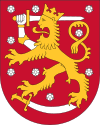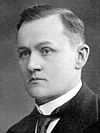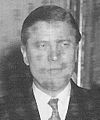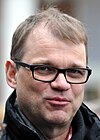
The politics of Finland take place within the framework of a parliamentary representative democracy. Finland is a republic whose head of state is President Sauli Niinistö, who leads the nation's foreign policy and is the supreme commander of the Finnish Defence Forces. Finland's head of government is Prime Minister Petteri Orpo, who leads the nation's executive branch, called the Finnish Government. Legislative power is vested in the Parliament of Finland, and the Government has limited rights to amend or extend legislation. The Constitution of Finland vests power to both the President and Government: the President has veto power over parliamentary decisions, although this power can be overruled by a majority vote in the Parliament.
In Finland a rekisteröity yhdistys or registrerad förening (Swedish) is a registered, non-profit organization. The abbreviations ry (Finnish) or rf (Swedish) are used as a suffix ending of the association's name, added when the association is officially registered. Registration is not mandatory, but is required in order for the association to become a juridical person, which confers various benefits. Registration requires the association to create a legally sound constitution, which must be approved by the Finnish Patent and Registration Office.

The Evangelical Lutheran Church of Finland is a national church of Finland. It is part of the Lutheran branch of Christianity. The church has a legal position as a national church in the country, along with the Orthodox Church of Finland.

The president of the Republic of Finland is the head of state of Finland. The incumbent president is Sauli Niinistö. He was elected for the first time in 2012 and was re-elected in 2018. The next president of Finland will be elected in 2024.

The Parliament of Finland is the unicameral and supreme legislature of Finland, founded on 9 May 1906. In accordance with the Constitution of Finland, sovereignty belongs to the people, and that power is vested in the Parliament. The Parliament consists of 200 members, 199 of whom are elected every four years from 13 multi-member districts electing 7 to 36 members using the proportional D'Hondt method. In addition, there is one member from Åland.
The title of docent is conferred by some European universities to denote a specific academic appointment within a set structure of academic ranks at or below the full professor rank, similar to a British readership, a French maître de conférences (MCF), and equal to or above the title of associate professor.
The Constitution of Finland is the supreme source of national law of Finland. It defines the basis, structures and organisation of government, the relationship between the different constitutional organs, and lays out the fundamental rights of Finnish citizens, and individuals in general. The original Constitution Act was enacted in 1919, soon after Finland declared its independence in 1917. The current draft of the Constitution came into force on 1 March 2000.

The Finnish Government is the executive branch and cabinet of Finland, which directs the politics of Finland and is the main source of legislation proposed to the Parliament. The Government has collective ministerial responsibility and represents Finland in the Council of the European Union. In the incumbent Orpo Cabinet, the Government comprises 19 ministers leading 12 ministries.
Same-sex marriage has been legal in Finland since 1 March 2017. A bill for the legalisation of same-sex marriages was approved by the Finnish Parliament in a vote of 101–90 on 12 December 2014 and signed into law by President Sauli Niinistö on 20 February 2015. Further legislation to harmonise other laws with the legalisation of same-sex marriage was passed in 2016. The law took effect on 1 March 2017. Finland was the twentieth country in the world, the twelfth in Europe as well as the last Nordic sovereign state to allow same-sex couples to marry nationwide.
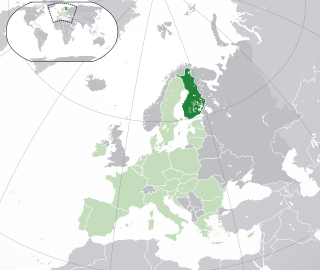
Lesbian, gay, bisexual, and transgender (LGBT) rights in Finland are among the most advanced in the world. Both male and female same-sex sexual activity have been legal in Finland since 1971 with "promotion" thereof decriminalized and the age of consent equalized in 1999. Homosexuality was declassified as an illness in 1981. Discrimination based on sexual orientation in areas such as employment, the provision of goods and services, etc., was criminalized in 1995 and discrimination based on gender identity in 2005.
Human rights in Finland are freedom of speech, religion, association, and assembly as upheld in law and in practice. Individuals are guaranteed basic rights under the constitution, by legislative acts, and in treaties relating to human rights ratified by the Finnish government. The constitution provides for an independent judiciary.

Law enforcement in Finland is the responsibility of several agencies. The Police of Finland, a national police agency, is responsible for most tasks. The two other main agencies are the Finnish Border/Coast Guards and the Finnish Customs. Examples of other agencies with limited policing powers are the Finnish Defence Forces, municipal parking inspectors and railway staff.
The Sámi Parliament of Finland is the representative body for people of Sámi heritage in Finland. The parliament consists of 21 elected members and 4 elected deputy members. As of 2020, the president is Tuomas Aslak Juuso.
Valtioneuvos is a Finnish title of honor awarded by the President of Finland to elder statesmen. It is one of two titles in the highest class of State of Finland honors. A tax on the titles of 48,400 euros or 12,100 euros must be paid by whoever proposes the title to a holder.
The law of Finland is based on the civil law tradition, consisting mostly of statutory law promulgated by the Parliament of Finland. The constitution of Finland, originally approved in 1919 and rewritten in 2000, has supreme authority and sets the most important procedures for enacting and applying legislation. As in civil law systems in general, judicial decisions are not generally authoritative and there is little judge-made law. Supreme Court decisions can be cited, but they are not actually binding.

Bogskär is a small group of Baltic Sea islets off the southernmost tip of Finland. It is Finland's southernmost land and governed by the municipality of Kökar in Åland. The islets are remote: the distance to the nearest large islands in Kökar, Föglö and Lemland is over 50 kilometres (31 mi).
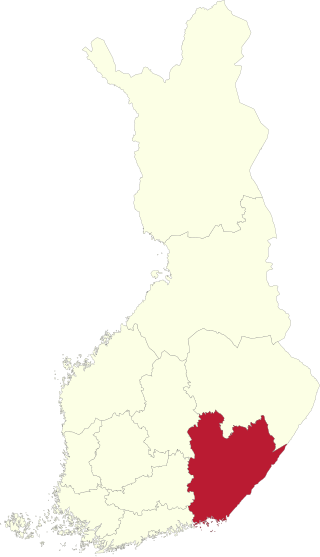
Southeast Finland is one of the 13 electoral districts of the Parliament of Finland, the national legislature of Finland. The district was established in 2013 by the merger of Kymi and South Savo districts. It is conterminous with the regions of Kymenlaakso, South Karelia and South Savo. The district currently elects 15 of the 200 members of the Parliament of Finland using the open party-list proportional representation electoral system. At the 2023 parliamentary election it had 353,468 registered electors.

Savo-Karelia is one of the 13 electoral districts of the Parliament of Finland, the national legislature of Finland. The district was established in 2013 by the merger of North Karelia and North Savo districts. It is conterminous with the regions of North Karelia and North Savo. The district currently elects 15 of the 200 members of the Parliament of Finland using the open party-list proportional representation electoral system. At the 2023 parliamentary election it had 343,887 registered electors.
The Yle tax is a Finnish tax collected to fund the operation of the country's public broadcasting company, Yle. The tax has been collected since 2013, when it replaced the television licence payment. Rates vary from 140 to 3000 euros a year, depending on the amount of taxable income an organization has.
The principle of public access to official records in Scandinavia is the principle that everyone should have the right to take part in non-classified public records and the right to attend court proceedings. The principle of public access to official documents also means that government officials and other central and local government employees are free to divulge information.










